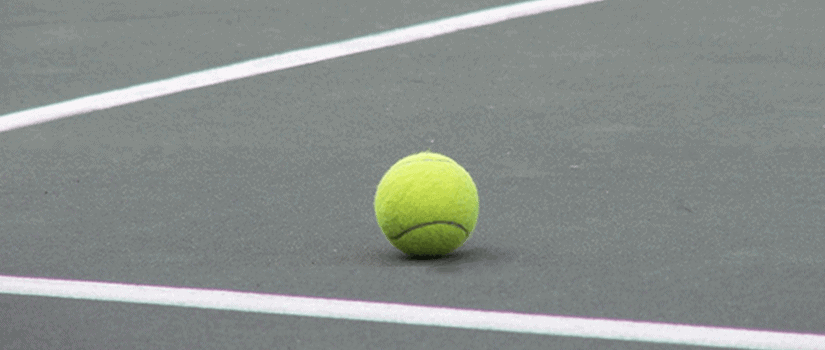
Looking Ahead
The Youth Sport Trust has released a microsite that suggests how PE and school sport might look in the future. The site presents various scenarios that illustrate how young people’s relationship with physical education might look in twenty years, taking into consideration factors such as technological advances, the relevance and quality of PE and school sport, levels of physical activity, and how all of these might impact on the emotional wellbeing and educational achievement of the next generation of students. The site was designed in collaboration with the Future Foundation, and aims to encourage a widespread debate over how future opportunities and challenges can be utilised to increase physical activity amongst students. The Youth Sport Trust offers four potential outcomes:
1. Digitally Distracted
Advances in technology have had a huge impact on all areas of life, and the field of education is already seeing dramatic changes in teaching and learning methods through the implementation of various gadgets and apps, and the widespread use of social media amongst the younger generation in particular. Class of 2035 predicts one scenario in which young people have been negatively influenced by the digital revolution, and feel isolated from the physical environment. In this version of the future, students have become entirely dependant on devices that allow them to live through social media rather than the outside world. This results in exceptionally short attention spans, impacting their ability to focus during a full-length lesson.
The significant effects on individual social and emotional wellbeing are also noted, as students’ concern with image influences their willingness to participate in exercise during PE lessons. There is a clear lack of face-to-face socialisation with peers, resulting in lowered mood and decreased motivation, and the use of remote learning facilities (despite the potential benefits for accessing information outside of school) means that little time is spent in class with teachers.
2. Fit-For-Purpose
This is the ideal scenario predicted by the Class of 2035 site, in which young people are empowered to fully participate in physical education, sport and other physical activities in and outside of school. Here, students are motivated by the belief that they can contribute personally to a brighter future. The latest technology is embraced by teachers who not only understand the attachment that young people have on digital devices, but use this attachment for beneficial means such as tracking healthy eating and exercise goals. There an emphasis on teaching students the wider benefits of physical activity in conjunction with PHSE and Citizenship, and students are aware of the link between exercise and improved wellbeing.
The greater engagement with physical activity through digital devices ensures that young people are able to think clearly and focus in lessons, show enthusiasm and motivation to excel, and understand the impact that a healthy and active lifestyle has on their potential academic achievement in all subjects.
3. Go-It Alone
A third scenario highlights the difficulties in providing high quality physical education without adequate infrastructure. In this situation, the younger generation are keen to get involved with sporting activities and develop an active lifestyle, but are unable to maximise their potential due to the inefficient support offered to schools. Enthusiastic teachers are out of touch with the latest technology, and lack necessary training to engage their class. Instead of asking teachers for information or support, frustrated pupils turn to the internet and organise their own activities.
This lack of engagement leads to a disinterest in PE amongst the student body, and a resultant lack of enthusiasm for school in general. Young people are highly skilled at using social media to arrange physical activities outside of school hours (such as street sports), and their motivation and energy is entirely focused on this type of activity to the detriment of their education. There is an additional concern that girls do not take part in enough structured exercise, leading to health problems later on in life.
4. Sidelined
The worst-case scenario presented by the Youth Sport Trust shows a lethargic and poorly motivated generation, let down by continuously decreased funding and degraded school facilities. This group is consumed by digital media to the point that very little time is spent engaging in outdoor activity, and any interest in sport or general wellbeing is severely lacking. Students spent little time socialising with friends in the offline world, and lack social skills as a result.
In this scenario young people are left ill-equipped for the challenges of adult life, with many individuals showing little to no enthusiasm for school. This generation often feels stressed, overwhelmed, isolated and either anxious or apathetic towards the future. There is an intense pressure to achieve good grades, and PE is often viewed as a waste of time that should be spent revising and studying for exams.
The Class of 2035 website offers to those connected with education a unique look into the possible evolution of PE and school sport in the next two decades. Physical education throughout childhood and adolescence plays a key role in the formation of successful and socially productive adults, and the Youth Sport Trust have provided an additional way in which educators and policy makers can consider the future impact of decisions.
References
- Youth Sport Trust (2015) ‘Class of 2035’. Available at: https://www.youthsporttrust.org/news-insight/research/class-of-2035 [Accessed March 11th 2015].


[…] Youth Sport Trust Reveals Class Of 2035 […]